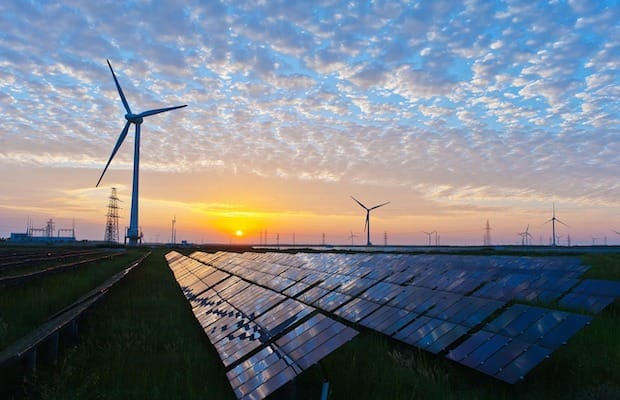
In H1 2020, wind and solar generation rose 14 percent compared to H1-2019, generating 9.8 percent or nearly one-tenth of global electricity.

A new report has put the spotlight on how fast wind and solar energy have expanded over the last few years to become major sources of electricity generation in most countries around the world and have almost singlehandedly reducing coal burn throughout the world. The rise has been so rapid, that in the first half (H1) of 2020, wind and solar generation rose 14 percent compared to H1-2019, generating 9.8 percent or nearly one-tenth of global electricity.
The data was revealed in a new half-year analysis issued by Ember. It aggregated national electricity generation for 48 countries making up 83 percent of global electricity production.
The report found that in the 48 countries analysed, wind and solar generation rose from 992 terawatt-hours in 2019 to 1,129 terawatt-hours in H1-2020. That meant wind and solar’s share of global electricity has risen from 8.1 percent in 2019 to 9.8 percent in H1-2020; and their share more than doubled from 4.6 percent in 2015, when the Paris Climate Agreement was signed.
The two sources generated almost as much CO2-free power as nuclear power plants, which generated 10.5 percent of global electricity in H1-2020 and whose share remained unchanged from 2019.
The report then goes on to add that many key countries now generate around a tenth of their electricity from wind and solar. China (10 percent), the US (12 percent), India (10 percent), Japan (10 percent), Brazil (10 percent) and Turkey (13 percent). The EU and UK were substantially higher with 21 percent and 33 percent respectively; within the EU, Germany rose to 42 percent. While at the other end of the spectrum, Russia is the largest country so far to shun wind and solar, with just 0.2 percent of its electricity from wind and solar.
Global coal generation fell 8.3 percent in the first half of 2020, compared to H1-2019. This breaks a new record, following on from a year-on-year fall of 3 percent in 2019, which at the time was the biggest fall since at least 1990.
“Countries across the world are now on the same path – building wind turbines and solar panels to replace electricity from coal and gas-fired power plants. But to keep a chance of limiting climate change to 1.5 degrees, coal generation needs to fall by 13 percent every year this decade. The fact that, during a global pandemic, coal generation has still only fallen by 8 percent shows just how far off-track we still are. We have the solution, it’s working, it’s just not happening fast enough,” said Dave Jones, senior electricity analyst at Ember.
The fall in H1-2020 is because electricity demand fell globally by 3 percent in H1-2020 due to COVID-19, as well as due to rising wind and solar. Although 70 percent of coal’s fall in H1-2020 can be attributed to lower electricity demand due to COVID-19, 30 percent can be attributed to increased wind and solar generation. The US and the EU are racing to reduce coal, with falls of 31 percent and 32 percent respectively. China’s coal fell only 2 percent, meaning its share of global coal generation rose to 54 percent so far this year, up from 50 percent in 2019 and 44 percent in 2015.
Finally, the report adds that despite the rise of renewables, the global electricity transition is off-track for 1.5 degrees. Coal needs to fall by 13 percent every year this decade, and even in the face of a global pandemic coal generation has only reduced 8 percent in the first half of 2020. The IPCC’s 1.5-degree scenarios show coal needs to fall to just 6 percent of the global generation by 2030, from 33 percent in H1-2020.
The IPCC shows in all scenarios most of coal’s replacement is with wind and solar.





























